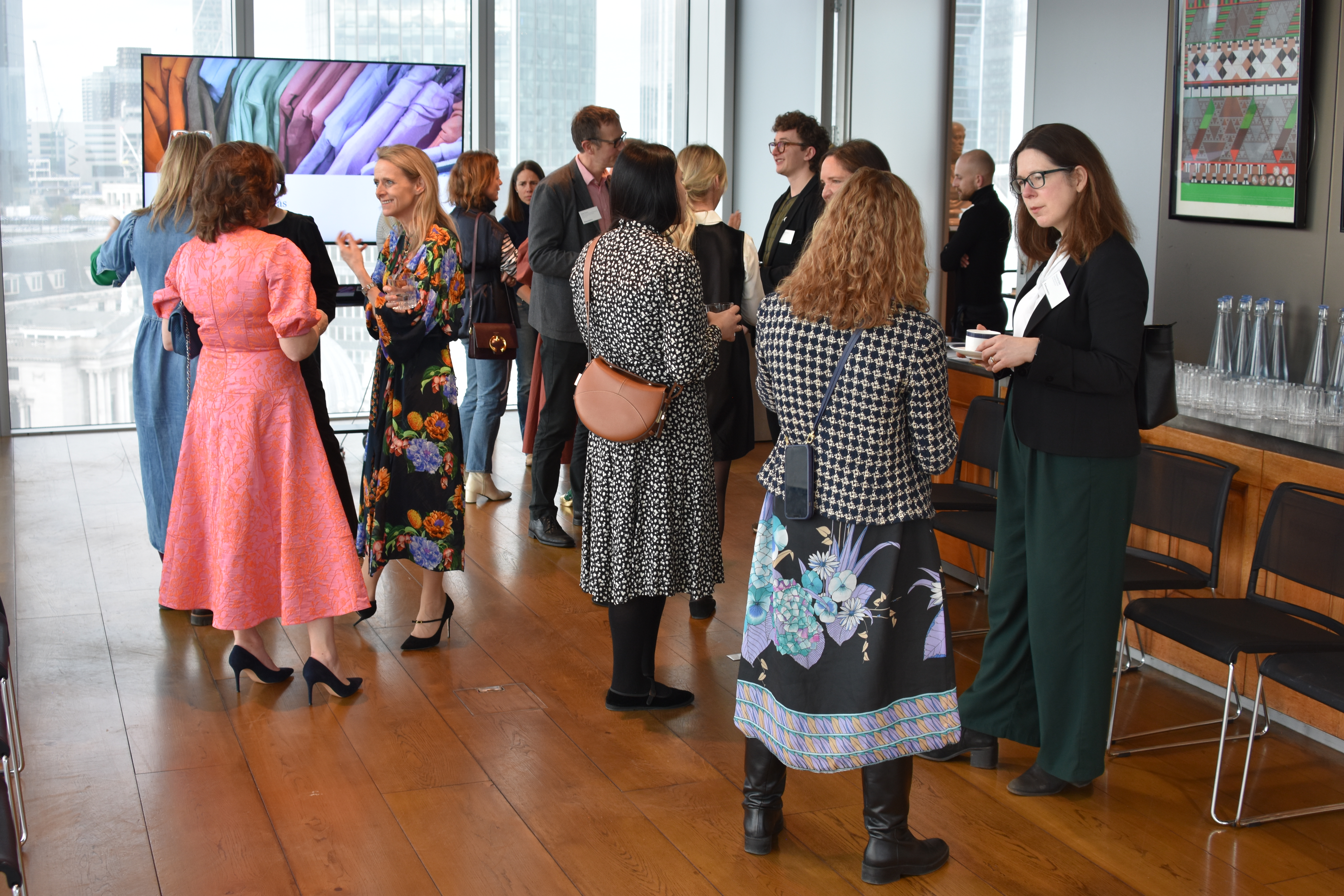Sustainable fashion should never go out of style
There are few topics in life where we see a consensus across society, but wearing clothes is one of them. Whether it’s haute couture or a charity shop gem, clothing is a way of expressing yourself. But with an increased focus on sustainability in our society, is it time to question the impact of your favourite shirt?
‘Fast fashion’ lies at the heart of this conversation. It was first developed in the 1980s based on a product-driven manufacturing concept called ‘quick response’. The result is inexpensive clothing produced quickly in response to the latest market trends.
Many brands have moved away from traditional production processes towards this fast fashion model, both on the high street and online. But with over 10% of global carbon emissions coming from the textile industry1 across the whole value chain, should we as society call time on this ‘more is more’ mindset?
Brands can make headlines in the right way by aligning sustainability with creativity. Over a five-year partnership with the Burberry Foundation, Elvis & Kresse, an eco-luxury brand, made use of its leather waste to create fashion products. The company donates 50% of its profits to charity.
In collaboration with Kresse Wesling CBE, the co-founder of Elvis & Kresse, Rothschild & Co hosted a roundtable discussion with industry experts to deliberate this ‘fast fashion faux pas’. This article outlines the key takeaways from our conversations.
The supply chain traceability model
The lack of accountability in fashion supply chains is a long-standing issue. The WWF released an article in 2011 which highlighted that one key detail missing from your t-shirt label is that it takes approximately 20,000 litres of water to produce it.2
With this in mind, a topic consistently trending across the evening was the continued demand for more stringent sustainability standards within companies. The key reasoning is that it would increase a brand’s supply chain traceability, particularly for large multinational fashion companies who source materials and collaborate with organisations from all over the globe. This level of traceability is currently hard to implement in highly commoditised markets such as cotton.
Clothing manufacturers have less strict rules than other industries, such as food production, when it comes to disclosing the origin of their product. However, there is a global movement towards garment tracing, which is intended to improve standards across the supply chain and enable carbon cost transparency. The EU has committed to introducing a ‘digital product passport’ for textiles by 2030, which requires brands to share data on a garment’s product lifecycle.
We need to make textiles out of substances that don’t poison people and the planet."

Kresse Wesling CBE, co-founder of Elvis & Kresse, and Richard Brass, Co-Head of Sustainable Capital, Managing Director at Rothschild & Co, at the event. Photograph taken by Sean Molony
Are quality materials in vogue?
Another benefit of enhancing supply chain traceability would be to motivate consumers to demand higher quality materials, which often come with a ‘green premium’.3 Over time, the use of cheaper synthetic materials has become increasingly prevalent, but some luxury brands have been able to ‘afford the risk’ of experimenting with the use of innovative albeit more expensive textiles.
Price parity is a huge opportunity for the creation of new material, but attendees noted the importance of legislation and government subsidies to accelerate innovation. They also highlighted the need to ensure local communities were involved in the future of the industry.
Whilst plenty of innovative new materials are being developed, the biggest challenge is faced in surviving in competition with incumbent materials until you can scale.
Tech companies like LAYBL are said to be at the forefront of innovation in garment tracing helping brands increase their accountability for their products and clothing waste, and connecting the consumers with clothing care, repair, rent, resell, recycle and donation services. Jen Wagner, CEO of LAYBL, said: ‘It’s only by understanding what happens to clothes post-sale that we can start to reduce clothing waste and the impact on our natural environment.’
Large retailers have the power to demand higher standards within the supply chain, and the same power is also in the hands of consumers and other industry stakeholders.
For example, rather than fashion awards ceremonies having a sustainability-focused award, should they instead only allow companies to make a submission or be nominated if they have robust sustainability policies in place?
Moving focus to synthetic fibres means needing to improve recycling solutions for existing materials, those with expertise in the current methods warned. Many consumers are loyal to specific brands, and these companies could do more to repair clothing which is distressed, improving the longevity of materials.
Guests said if such models were established for luxury brands, smaller and mid-market brands would feel pressure to follow suit.
While we use fashion to express ourselves, the group asked how brands can encourage an enhanced value relationship between consumers and the clothes they wear.
Perhaps language is the answer? Large fashion houses need to ensure their marketing resonates with the consumer rather than use hackneyed terms like ‘sustainability’. Brands need to establish a narrative of repair or resell to make their higher quality materials more desirable and ultimately attract loyal customers.
Patrick McDowell runs an eponymous fashion brand and joined us for the discussion. He creates collections where each garment is produced in limited quantity and individually numbered. His company offers a complimentary refit to encourage items to be passed to loved ones. If other luxury brands were able to create a similar story of longevity with their clothing, luxury consumers are willing to pay a premium for sustainable clothes, he said.

Fashion industry representatives at New Court, home of Rothschild & Co. Photograph taken by Sean Molony
Legislation is not the (out)fit for purpose
Across the evening, against the famous advice from Mark Twain to ‘never discuss politics’, many parties stressed the need for better legislation in the industry.
A little known statistic is that textile production contributes more to climate change than international aviation and shipping combined.4 Attendees said current legislation across the globe does not equate the ‘harm’ of the industry with production.
Relative to the cosmetics industry, which is subject to stringent testing and regulation, there is very little legislation in fashion, even though both cosmetics and clothes touch our skin.
Those more than familiar with the industry felt that legislation could have a powerful knock-on impact across the globe. With fashion brands targeting multiple markets, EU regulation can force suppliers based in the UK, for example, to change their entire supply chain to comply.
France is currently reviewing a proposed levy of €5 on each item of fast fashion sold, which guests said would help better equate the cost of these materials with the ‘damage’ they cause.5
Legislation would also be constructive in the framework of carbon ‘in-setting’, which refers to the implementation of nature-based solutions to reduce a company’s carbon footprint. For example, would consumers think twice about buying a new shirt if they knew it had been made using unsustainable production methods?
A vision for the future
There is a clear drive to boost sustainable practices in clothing and accessory production with industry leaders being the focal point to affect change in the industry, especially those within luxury brands.
Appropriate legislation can help increase the use of innovative materials and clean up supply chains. This could help solve a current issue where incentives can often be at odds with each other within an organisation.
Ultimately, the call to action is for the industry to act to ensure sustainable fashion never goes out of style.
The innovation for the circular economy exists, but it needs investment. Investment is only going to flow at the rate required if we have a level playing field where legislation is enforced and enhanced."
Tiffanie Darke, of fashion consultancy Story Studios, said ‘the way garments are currently priced does not take into account their true cost’. She said: ‘A $20 t-shirt does not include the huge cost to the environment in water and pesticides it takes to grow the plant or the low wages of the cotton pickers, or the heat and toxic chemicals used to dye the fabric, or the coal to power the weaving factory, or the diesel used to transport the t-shirt over the three continents it has travelled from field to factory to store, to arrive on a high street in the US, UK or Europe.’
There was a strong belief among those at the event that government subsidies needed to equate to the support provided to other industries. They highlighted the £2 billion committed by the UK government to research and development funding in the automotive sector which will be used to encourage the manufacturing and development of zero emission vehicles, their batteries and supply chains until 2030.6
Thank you
Rothschild & Co would like to thank the following people for attending the event and contributing to the report: Brandon Henderson of Redburn Atlantic, Brigette Pearson of Rothschild & Co, Dahlia Dana of the Entrepreneurs Hub at the Design Museum, Dr Christina Dean of The R Collective, Eleanor Harry of HACE, Helen Lofts of Davy J Ltd, Irene Maffini of PDS Ventures, Jen Wagner of LAYBL, Jocelyn Wilkinson of Boston Consulting Group, Jo Dalton of JD Ventures and JD&Co, Julian Ellis-Brown of Ponda, Kate Stephens of Smart Works, Kresse Wesling CBE of Elvis & Kresse, Lynda Petherick of British Fashion Council, Mark Davis of The Body Shop, Max Gottschalk of Ocean 14 Capital and Vedra Partners, Neloufar Taheri of Ponda, Nina Marenzi of DIRT and the Sustainable Angle, Patrick McDowell of Patrick McDowell, Richard Brass of Rothschild & Co, Sarah West Young of Modern Synthesis, Tiffanie Darke of Story Studios, Victoria Sant of The Investor Forum.
Ready to begin your journey with us?
Citations
[1] UN Alliance aims to put fashion on path to sustainability, UN Alliance, 12 July 2018
[2] Saving water: been there, done that, bought the t-shirt?, WWF, 29 March 2011
[3] A costly impact: 8 reasons why sustainable clothes are so expensive, Good Maker Tales
[4] Fixing fashion: clothing consumption and sustainability, House of Commons Environmental Audit Committee, 19 February 2019
[5] France’s lower house votes to limit ‘excesses’ of fast fashion with environmental surcharge, The Guardian, 15 March 2024
[6] UK battery strategy, Gov.uk, 6 December 2023
Past performance is not a guide to future performance and nothing in this article constitutes advice. Although the information and data herein are obtained from sources believed to be reliable, no representation or warranty, expressed or implied, is or will be made and, save in the case of fraud, no responsibility or liability is or will be accepted by Rothschild & Co Wealth Management UK Limited as to or in relation to the fairness, accuracy or completeness of this document or the information forming the basis of this document or for any reliance placed on this document by any person whatsoever. In particular, no representation or warranty is given as to the achievement or reasonableness of any future projections, targets, estimates or forecasts contained in this document. Furthermore, all opinions and data used in this document are subject to change without prior notice.






